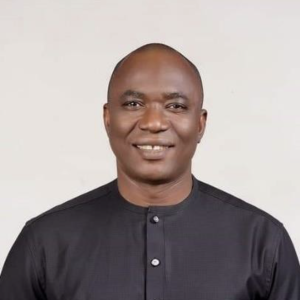Jamaica making progress to end AIDS
The Caribbean needs greater political leadership and investment in evidence-informed initiatives.
This is needed to bridge the gaps within and among communities living with and most affected by HIV and to address inequalities to end AIDS as a public health threat by 2030.
An estimated 330,000 people are living with HIV in the Caribbean. Of that number, 83 per cent know their status and 68 per cent of them are on treatment. However, only 57 per cent of people living with HIV are virally suppressed and thus have a reduced risk of transmitting the virus to their sexual partners. The region, therefore, still has over 100,000 people still waiting to be put on treatment.
Data from the recently launched Global AIDS Report - The Path to End AIDS by 2030, show men living with HIV in the Caribbean are less likely than women living with HIV to be on treatment. Since 2010, antiretroviral therapy coverage has increased from 19 per cent to 63 per cent among men and from 21 per cent to 74 per cent among women by end of 2022. In 2022, treatment coverage among males across the region ranged from as low as 38 per cent in Suriname to a high of 81 per cent in The Bahamas whereas among females, treatment ranged from a low of 49 per cent in Belize to a high of 83 per cent in Haiti. Sadly, while several countries have eliminated mother-to-child transmission of HIV, children are lagging in treatment across the region as only 39 per cent of the 11,000 children living with HIV are on treatment.
Jamaica has been at the forefront in the fight against HIV for years in the Caribbean and has seen progress in the reduction of new infections by 17 per cent between 2010 and 2022. Thirty thousand people are living with HIV in the country. This is equivalent to 9 per cent of the HIV population in the region. The national treatment cascade shows that 91 per cent of people living with HIV know their status, but only 14,560 (or 49 per cent) are on antiretroviral treatment. Sadly, only 38 per cent of all people living with HIV are virally suppressed. More females than males are accessing HIV treatment services. Therefore, a lot of effort is needed to have the 15,000 people not yet on treatment identified and linked to care and treatment. This is especially critical for our men and boys and key populations such as gay and other men who have sex with men and transgender persons.
MAJOR BARRIERS
Stigma and discrimination are major barriers to accessing HIV-related services in the country. The latest Stigma Index 2.0 survey shows that over half (53 per cent) of people living with HIV experience enacted or self-stigma, which accentuates denial of their HIV status and could disempower them from accessing treatment services. Further, stigma is experienced by a third of people living with HIV at the community level, and about 10 per cent experience HIV-related stigma from healthcare personnel.
The Jamaican Government has provided strong leadership for the HIV response and has leveraged the strengths of civil society and the private sector to expand HIV services in support of the public sector HIV response. The Government is discussing with its multisectoral partners the need to integrate HIV programmes into the primary healthcare system for sustainability and improved health at the community level. The integration of HIV programming with primary health care offers a great opportunity and hope for improved health and well-being. However, for this policy shift to be successful, the integration must prioritise people-centred differentiated service delivery and community-based services, and healthcare workers must be trained and supported to deliver gender-sensitive and rights-based services.
The Government must be congratulated for continuously securing HIV commodities for the treatment of its citizens from domestic resources. This is a clear departure from the situation in sub–Saharan Africa, where most countries are dependent on The Global Fund and PEPFAR for their treatment programmes. The ministry and the National Family Planning Board (NFPB) have collaborated with civil society, and the network of people living with HIV to work together via the Global Partnership to Eliminate HIV-related stigma and discrimination. This joint effort helps to identify the inequality barriers and how to effectively address them based on the available data.
These initiatives clearly demonstrate the Government’s commitment to make the HIV response inclusive, multisectoral, and sustainable towards improved health outcomes. They are evidence that Jamaica is on the right path to ending AIDS as a public health threat — even if the pace needs to be turbo-charged.
ECONOMIC CHOICE
Ending AIDS is a political and economic choice. The 2023 UNAIDS Global AIDS Report highlights that countries with strong political leadership invest in scaling up evidence-based HIV prevention and treatment; tackle the inequalities holding back progress; engage and enable communities and civil society organisations in their vital watch-dog role in the response; and make available domestic resources that are sufficient and sustainable.
No one should die of AIDS-related illnesses in this era because treatment works, it saves lives. So many people should not be uninitiated in care. Governments must ask themselves what the sociocultural, policy and legislative barriers are that keep men and children across the region away from HIV prevention and treatment services. There will be obstacles, but with political leadership and investment in the AIDS response to sustain and scale up what works and removing harmful laws and policies, and through partnership and global solidarity, the Caribbean will be on the right path to end AIDS as a public health threat by 2030.
Speech by








